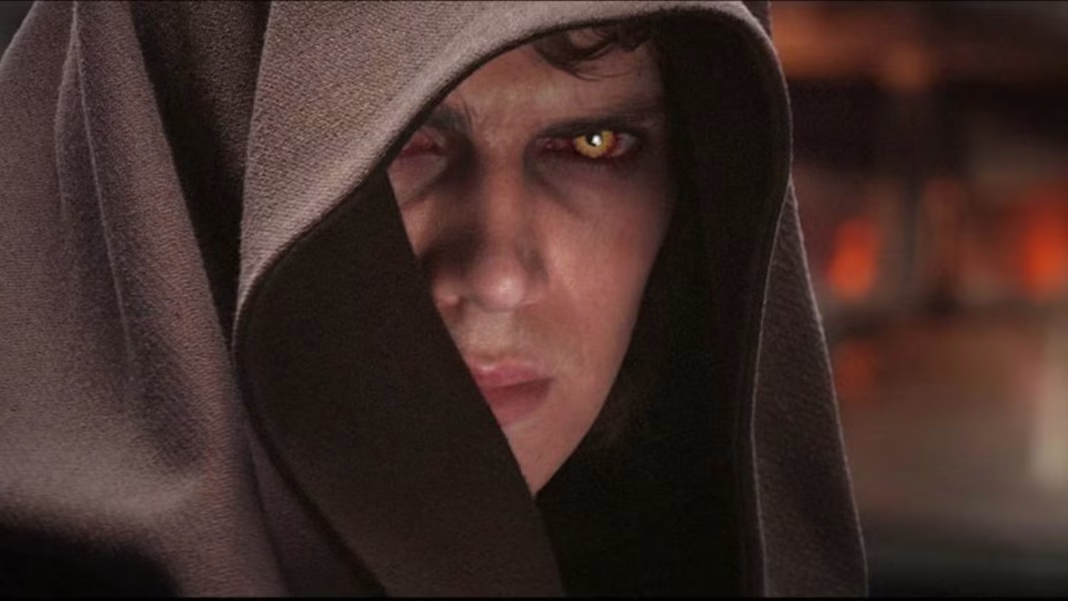Nearly two decades after its release, Star Wars: Episode III – Revenge of the Sith remains one of the most emotionally impactful entries in the galaxy far, far away. As the final installment of the prequel trilogy, it delivered on years of buildup, showing Anakin Skywalker’s tragic fall, the rise of the Empire, and the heartbreaking end of the Jedi Order.
Since the movie is celebrating its 20th anniversary (I am seriously getting old), I thought it might be prudent to look back at Revenge of the Sith. The movie stands as a crucial narrative bridge that not only ties the prequels to the original trilogy but also deepens our understanding of characters who would become legends.
The Fall of Anakin Skywalker
At its core, Revenge of the Sith is a tragedy. The film paints a picture of a Jedi Knight torn between duty and emotion, manipulated by a master politician in the form of Chancellor Palpatine. Anakin’s slow descent into darkness is more than just a plot point — it’s the emotional fulcrum of the entire prequel era.
Driven by fear, anger, and a desperate desire to save Padmé from a death he foresaw in a vision, Anakin becomes vulnerable to the manipulations of Palpatine, secretly the Sith Lord Darth Sidious. Despite warnings from the Jedi Council and his mentor Obi-Wan Kenobi, Anakin feels increasingly alienated and disillusioned with the Jedi, who he believes are corrupt and hypocritical. When Palpatine promises the power to prevent death—something the Jedi cannot offer—Anakin gives in, renouncing his identity to become Darth Vader.
Hayden Christensen’s performance, once polarizing, has been re-evaluated more warmly in recent years. His portrayal of Anakin’s inner conflict — torn between love, fear, and rage — has gained appreciation, especially as modern audiences revisit the film through the lens of The Clone Wars and Obi-Wan Kenobi.

Order 66: The End of an Era
Few sequences in Star Wars hit as hard as Order 66. As John Williams’ haunting score plays, we watch the fall of heroes and the betrayal of a sacred order. Order 66 was a secret command issued by Emperor Palpatine in the film. It labeled all Jedi as traitors to the Galactic Republic and commanded clone troopers to execute them on sight. In just a few minutes, the Jedi — guardians of peace for generations — are nearly wiped out. It’s one of the darkest and most effective sequences in all of Star Wars.
This moment is more than just a turning point in the story; it marks the official death of the Republic and the rise of tyranny. And for many fans, it was the moment the saga shed its fantasy trappings to explore themes of power, loyalty, and the consequences of blind faith.
Obi-Wan vs. Anakin: A Duel for the Ages
The climactic duel on Mustafar between Obi-Wan Kenobi and Anakin Skywalker is arguably the most emotionally charged lightsaber battle in Star Wars history. It’s not just two warriors clashing — it’s a battle between brothers, teacher and student, light and dark.
Set against the fiery backdrop of a volcanic world, the choreography, dialogue, and score combine to create a moment that defines both characters for the rest of the saga. “You were my brother, Anakin. I loved you.” That line still echoes through the fandom. However, “It’s over Anakin. I have the high ground”, is also one of the most commonly heard quotes as well.
Legacy and Reappraisal
Upon release in 2005, Revenge of the Sith was met with generally positive reviews, but like much of the prequel trilogy, it endured its share of criticism. Over time, however, the film has gained a reputation as not only the strongest of the prequels but one of the most important films in the franchise.
The rise of younger fans who grew up with the prequels, along with deeper context from animated series and live-action Disney+ shows, has led to a broader appreciation for George Lucas’s vision. Themes of loss, fear, and the corruption of power feel more relevant than ever.
Wrapping it Up
Revenge of the Sith is no longer just the movie that explains how Anakin became Darth Vader — it’s a poignant, often devastating story about love, fear, and the choices that define us. As we continue to explore new stories in the Star Wars universe, revisiting this film reminds us of the emotional depth and mythic storytelling that makes the saga endure.
Whether you watch it for the lightsaber duels, the political intrigue, or the heartbreaking fall of a hero, Revenge of the Sith stands as one of Star Wars’ most defining chapters.































